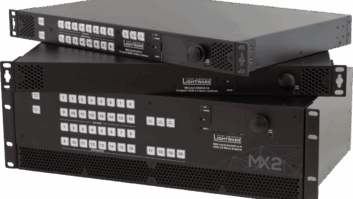
Albert Van Der Hout, business development director at 4EVAC, details the changes in PA-VA systems that now sees smaller and sleeker kit provide higher levels of control and zoned messaging as part of comprehensive VACIE systems.
When I started in this market, public address (PA) and voice alarm (VA) for the safety of public buildings and common areas were still in their early days of development. The technology was also, in many respects, quite basic and low quality. Although digital technology, computer control and automation were coming in during the early to mid 1990s, 100V line systems still accounted for a large proportion of PA-VA installations. These were large, cumbersome set-ups that needed a dedicated apparatus room to house several 19in racks containing amplifiers and processors. I began to realise that the future lay in reducing the amount of installed equipment, while at the same time ensuring that what was put in offered more in terms of features, quality and efficiency.
Since then the technology has developed to produce smaller units that do everything – and more – than those big racked systems could.
Keep it simple
The job of a VA system is relatively basic: to give instructions to people with the aim of keeping them safe or, in the most extreme scenario, helping them escape a dangerous situation. Voice messaging – either broadcast live or from a store of pre-recorded messages – is the best way to do this because announcements give vital information and do not alarm people as much as an old fashioned fire bell. The message storage and play-out device has developed over the years due to advances in computer memory and circuit miniaturisation. Technology has allowed more functionality to be added, including routing and monitoring of audio tracks, so that only the areas that need to be addressed actually receive the messages. Making this happen is not necessarily straightforward but the concept is a simple one, which should be the guiding thought during the design stages of a project.
Equipment should be recognisable and easily understood, but do more than what went before. For instance, the 4EVAC Compact 500 is a traditional-looking wall-mounted box with a fireman’s microphone, but behind that is a series of distributed amplifiers. It can be used as a single, standalone unit or part of a larger installation with several boxes working on a network. Each box is able to deliver two ‘live stream’ audio channels plus a serial data channel, which conforms to the Electronics Industry Association RS485 standard for data communications. The streams are carried over a redundant global network loop to any zones that have been created. The Compact 500 is able to transmit six different audio streams into local zones at the same time. These announcements are sourced from a six-channel message player that produces synchronised audio.
VACIE for all
Voice alarm and evacuation systems have continued to evolve, to the point where we now have a more comprehensive style of emergency communications. VACIE stands for voice alarm control and indicating equipment; as that term implies, there is now more involved than playing out or broadcasting announcements. Modern systems have a greater degree of control, allowing specific messages to be sent to selected zones only. These operations can be fully monitored by the unit, along with how the system is performing.
But this higher level of functionality does not mean VACIE systems are solely the preserve of big installations. Any building or space where the wellbeing of members of the public and staff has to be ensured should offer some form of VACIE capability, regardless of size.
VACIE systems have to keep working under the most demanding and dangerous conditions, often caused by fire and the water used to put it out. Any emergency voice installation has to be able to withstand such extremes and continue distributing the necessary information even if some parts of the system are damaged. This was the thinking behind 4EVAC’s first product, the LoopDrive Fault Isolator Module (FIM).
The FIM was 4EVAC’s first product and with it we intended to tackle the fundamental challenge of VA-PA: how to keep vital electrical equipment working under extreme and often hostile conditions. It is based on the return-loop principle; modules are placed between groups of loudspeakers on a loop, meaning that if there is a short or other fault between any two isolators in the chain, both will switch immediately to open circuit status. That isolates the faulty loudspeakers in between but allows other isolators on the system, loudspeakers on the loop and T-branch speakers of the FIMs that have been activated to carry on operating as normal.
This level of automated device detection will continue to isolate any affected sections and re-route the network, if necessary, to keep announcements being transmitted right up until the final call.
We are in business to develop and sell technology but it is technology that is designed to protect people and save lives. That is the most important thing.







